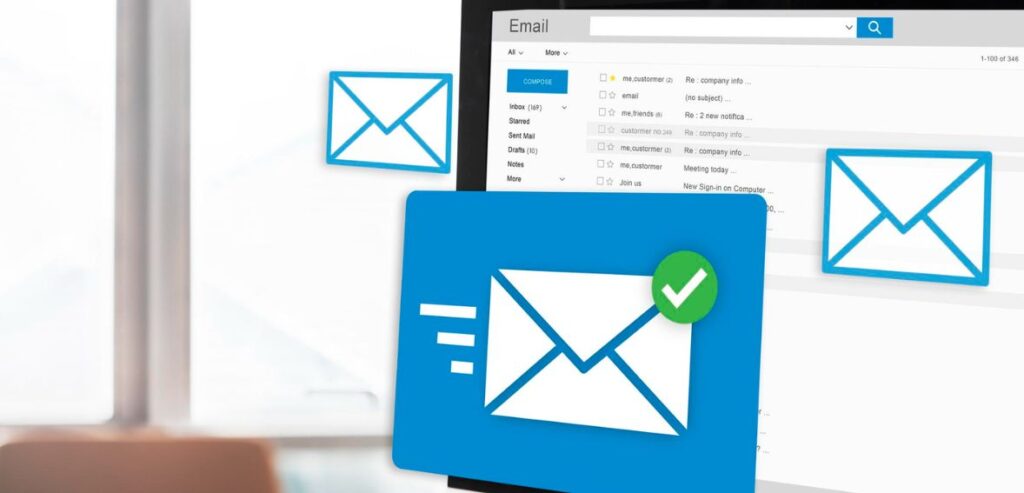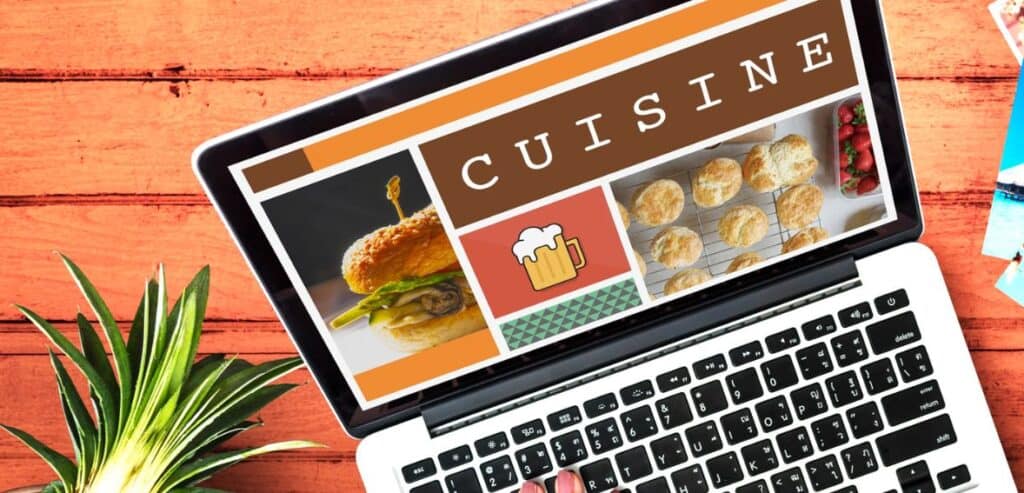
How to Use Email Marketing to Bring More Customers to Your Restaurant: 6 Tips
As a direct, personalized and economical communication method, restaurants are increasingly using email marketing in the era of digital competition, where online visibility determines customer foot traffic. Restaurants have complete control over their messaging, delivery schedule, and targeting with email marketing, unlike social media, which depends on erratic algorithms. It’s among the few marketing techniques that successfully combines scale and intimacy.
Yet, a lot of restaurant owners misuse or underuse email campaigns, either by failing to segment and personalize their outreach or by sending random, pointless messages. When combined with a strong brand identity, email marketing becomes even more powerful. A clearly defined voice and visual identity can elevate every campaign—see how to build one through these branding strategies.
Strategic use of email marketing can increase reservations during slow hours, turn one-time diners into repeat customers, and even spark engagement during off-seasons in a restaurant business where margins are slim and customer loyalty is precious.
However, in order to achieve this, restaurateurs need to go beyond the fundamentals and genuinely comprehend what drives a customer to open, read, and respond to an email. This article provides a thorough analysis of six well-explained strategies that restaurants can use to maximize the effectiveness of email marketing, all of which are aimed at increasing revenue, reach, and retention. To help your restaurant use email marketing to drive new foot traffic and boost engagement, here are six proven strategies to get more customers through your doors.
Tip 1 : Building a Quality Email List the Right Way

Restaurants need to invest in creating a high-quality email list before they can launch any successful campaign. This involves gathering a list of real contacts who have expressed interest in the restaurant’s offerings rather than merely gathering random emails or buying third-party data.
There are many ways to collect organically, such as using the restaurant’s online reservation forms, on-site Wi-Fi sign-ups, loyalty programs, or even at the point of sale when patrons make payments. Choosing the best POS systems can also streamline this process by integrating data collection with payment and loyalty features.
Here, asking for permission openly and honestly is the best course of action. Customers are far more likely to interact when they voluntarily subscribe. Offer an instant incentive, such as a free dessert, a discount on the subsequent meal, or special access to an event, to increase opt-ins.
Give an instant incentive, such as a free dessert, a discount on the subsequent meal, or special access to an event, to increase opt-ins. Use strategically positioned calls to action (CTAs) on all digital touchpoints, such as QR codes on receipts, social media links, and website pop-ups.
People who truly want to hear from your brand—not just once, but repeatedly—should be added to a strong list gradually but steadily. Even when building a list, segmentation is essential. Sorting subscribers according to their demographics, purchase preferences, or visitation frequency lays the groundwork for later, more individualized communications. Your list’s quality will have a direct impact on the open rate, click-through rate, and—above all—conversions.
Tip 2: Crafting Mouth-Watering Content That Converts

Appeal is crucial in the food industry. High-quality food photos aren’t the only thing that makes for appealing email content. It combines compelling narrative, evocative descriptions, alluring offers, and significant reader relevance. Instead of viewing every email as a sales pitch, consider it a carefully curated experience. Consider starting with a story instead of discounts, such as a behind-the-scenes peek at the chef’s seasonal creation, a highlight of a devoted customer’s favorite dish, or an announcement of an upcoming event.
Your email’s subject line serves as its first impression. In a crowded inbox, it must be interesting enough to be opened. Steer clear of overly promotional language and spammy phrases. Be warm, imaginative, and value-driven instead. When the email is opened, it should have a clear call to action, an attractive layout, and mobile optimization. Make use of persuasive copy, bold headers, and brief paragraphs. Emphasize important dishes, temporary menus, or event teasers to establish visual hierarchy.
Depending on timing and audience interest, content should change. While a new subscriber might benefit from an introductory welcome series, a loyal customer might value an early-access menu preview. Education-focused content-driven campaigns, such as those that feature chef interviews, sustainability initiatives, or wine pairing advice, have the potential to gradually increase trust and emotional engagement.
Harnessing User-Generated Content in Your Email Campaigns
User-generated content (UGC) is one of the most effective but neglected tools in a restaurant’s email marketing toolbox. These are pictures, reviews, or social media shoutouts that customers have posted to showcase their dining experience. Including such content in your emails increases community trust and lends authenticity. For example, including a well-shot Instagram photo of a guest enjoying your signature dish or sharing a heartfelt review about your staff’s hospitality reinforces your value proposition in a way that promotional content cannot. It’s social proof at its best.
A positive feedback loop Is also created when user-generated stories are featured because it inspires more customers to share their own experiences. You can encourage participation and increase organic engagement by asking your email audience to tag your restaurant or submit photos for a chance to be featured in the upcoming newsletter. UGC tells your story from the perspective of your most satisfied customers, in addition to making your email look good.
Tip 3 :Timing and Frequency That Works for Diners

Restaurants frequently have trouble determining the ideal email frequency and timing. Sending too few emails makes you forgettable, while sending too many puts you at risk of annoying subscribers. Consistency and balance are crucial. Depending on subscriber preferences and campaign objectives, restaurants should ideally send out updates at least once a week or every two weeks. Maintaining a steady cadence is crucial so that clients learn to expect your messages rather than being taken aback or overloaded by them.
Additionally, timing has a significant impact on open and engagement rates. Consider the habits of your clients. While emails sent in the evening before dinner can be used as last-minute reservation prompts or timely reminders, mid-morning on weekdays is frequently a good time for promotional content. Every subscriber base behaves differently, so use analytics to see what works. Seasonality is equally important. To attract early planners, for example, a Valentine’s Day pre-fixe dinner menu promotion needs to start a few weeks beforehand.
Without requiring constant manual labor, automated sequences—like birthday offers or anniversary emails—also enable you to arrive at the ideal time. In addition to increasing customer loyalty, these personalized touches produce enjoyable moments that patrons will come to associate with your brand.
Tip 4: Personalization Beyond First Names
In email marketing, personalization has progressed well beyond just adding the recipient’s first name. Restaurants must take a more subtle and behavior-based approach to personalization in the cutthroat digital market of today. This entails providing content that captures the essence of your customers’ personalities, preferences, dining habits, and interactions with your restaurant.
Your emails should emphasize plant-based specials or new vegetarian menu items, for example, if a customer regularly orders vegetarian meals. Emails about upcoming sommelier dinners would be pertinent and appreciated if the guest has previously attended wine-tasting events. Constant Contact, Klaviyo, and Mailchimp are a few examples of email software platforms that provide intelligent segmentation tools to help customize content at scale.
Making each consumer feel anticipated, appreciated, and understood is the aim. A timely announcement such as “Your favorite truffle fries are back on the menu!” can accomplish more than a generic marketing campaign. You can display distinct parts of the same email to various audience segments with the aid of dynamic content blocks. Higher open rates, better conversion rates, and deeper emotional connections with your brand are frequently the outcomes of such customized experiences.
Leveraging Loyalty Programs in Email Strategy
When properly incorporated into email marketing, loyalty programs can greatly increase customer lifetime value and retention. Emails are a great way to inform clients about their reward progress, points balance, or recently unlocked benefits. Reminders and motivators, these messages promote deeper brand engagement and return visits. An email that reads, “You’re only 20 points away from a free entry!” for example, makes the recipient want to come back soon.
Based on past influence, restaurants can also tailor rewards by sending birthday surprises or exclusive deals on frequently ordered items. Email channels also offer a way to inform clients about the benefits of joining the program, how it operates, and the special access that members are entitled to. Beyond the transactional, this ongoing touchpoint enhances emotional loyalty.
Tip 5: Re-Engagement Strategies for Lapsed Diners
A well-timed re-engagement campaign can bring back diners who may have fallen off the radar, but not all customers will stay active. Finding inactive subscribers—perhaps those who haven’t visited your restaurant or opened an email in the past ninety days—is the first step. Automate a message that kindly and supportively acknowledges their absence.
Remind them of their previous pleasures. Inform them of any updates they might have overlooked, such as updated reservation systems, redesigned interiors, or new menu items. Use time-limited deals that are only available to re-engaged customers to make the return worthwhile. Offers assistance, but more often than not, the message’s tone is more important. A personalized message that says, “We’ve missed you,” followed by a curated menu suggestion based on their last visit, can reignite interest.
Consistency is key. Re-engagement should be an ongoing process. With analytics, track which content types help win back customers most effectively and adjust accordingly. An occasional lapse doesn’t mean a lost customer, and sometimes all it takes is the right nudge to remind them of the flavors and experiences only your restaurant can offer.
Tip 6 : Measuring Campaign Performance and Iterating

Iteration, not just execution, is what distinguishes successful email marketers. Restaurants need to continuously evaluate and improve their email campaigns in addition to launching them. Open rates, click-through rates, conversion rates, and unsubscribe rates are examples of key performance indicators that provide information about what is and is not working.
Whether testing different subject lines, send times, content formats, or visuals, A/B testing ought to become standard procedure. Small changes to the layout, tone, or call-to-actions can have a big impact. Determine where readers spend the most time using heat maps, then modify your designs accordingly.
You can gain deeper insights into performance by integrating your email platform with CRM software or point-of-sale systems. For instance, did foot traffic or reservations actually rise that weekend when a promotional email about a new brunch menu was sent out? Email marketing doesn’t work alone. Campaign results can be linked to actual restaurant metrics to make sure your digital efforts produce measurable outcomes.
Conclusion
In the constantly evolving landscape of restaurant marketing, email is still one of the best ways to establish a strategic and personal connection with consumers. It combines the intimacy of one-on-one communication with the capacity to reach thousands.
The restaurants that view email marketing as a long-term relationship strategy rather than a promotional megaphone are the ones that really stand out, from developing an engaged list and producing engaging content to tailoring messages and tracking results.
Email marketing can create communities around tables and menus in addition to filling seats if it is executed with consistency, creativity, and a customer-focused approach.